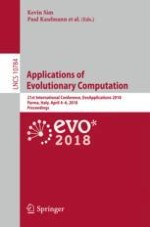This book constitutes the refereed conference proceedings of the 21st International Conference on the Applications of Evolutionary Computation, EvoApplications 2018, held in Parma, Italy, in April 2018, collocated with the Evo* 2018 events EuroGP, EvoCOP, and EvoMUSART.
The 59 revised full papers presented were carefully reviewed and selected from 84 submissions. EvoApplications 2018 combined research from 14 different domains: business analytics and finance (EvoBAFIN); computational biology (EvoBIO); communication networks and other parallel and distributed systems (EvoCOMNET); complex systems (EvoCOMPLEX); energy-related optimization (EvoENERGY); games and multi-agent systems (EvoGAMES); image analysis, signal processing and pattern recognition (EvoIASP); realworld industrial and commercial environments (EvoINDUSTRY); knowledge incorporation in evolutionary computation (EvoKNOW); continuous parameter optimization (EvoNUM); parallel architectures and distributed infrastructures (EvoPAR); evolutionary robotics (EvoROBOT); nature-inspired algorithms in software engineering and testing (EvoSET); and stochastic and dynamic environments (EvoSTOC).
